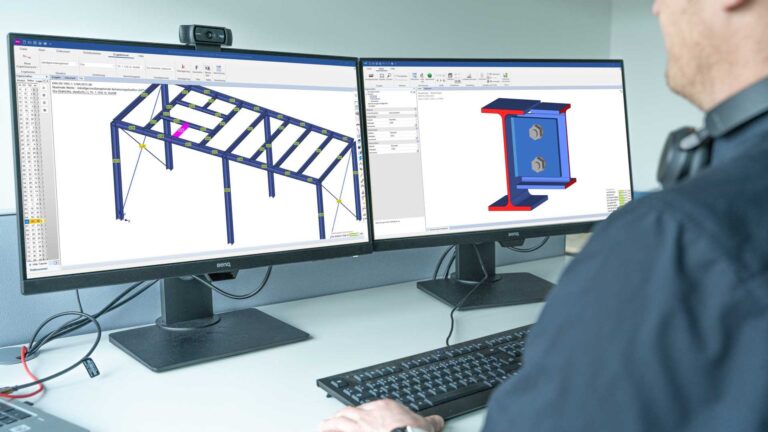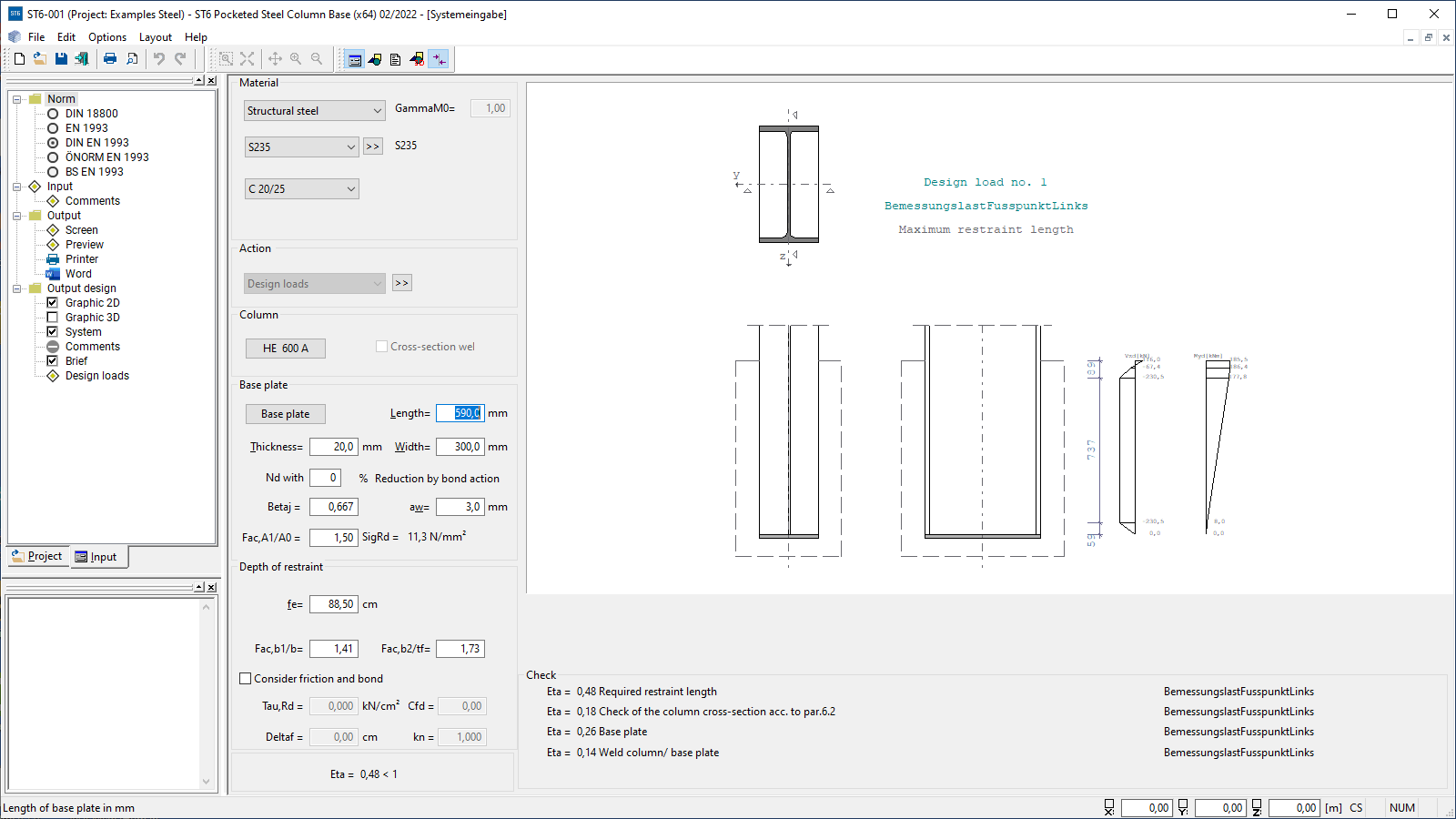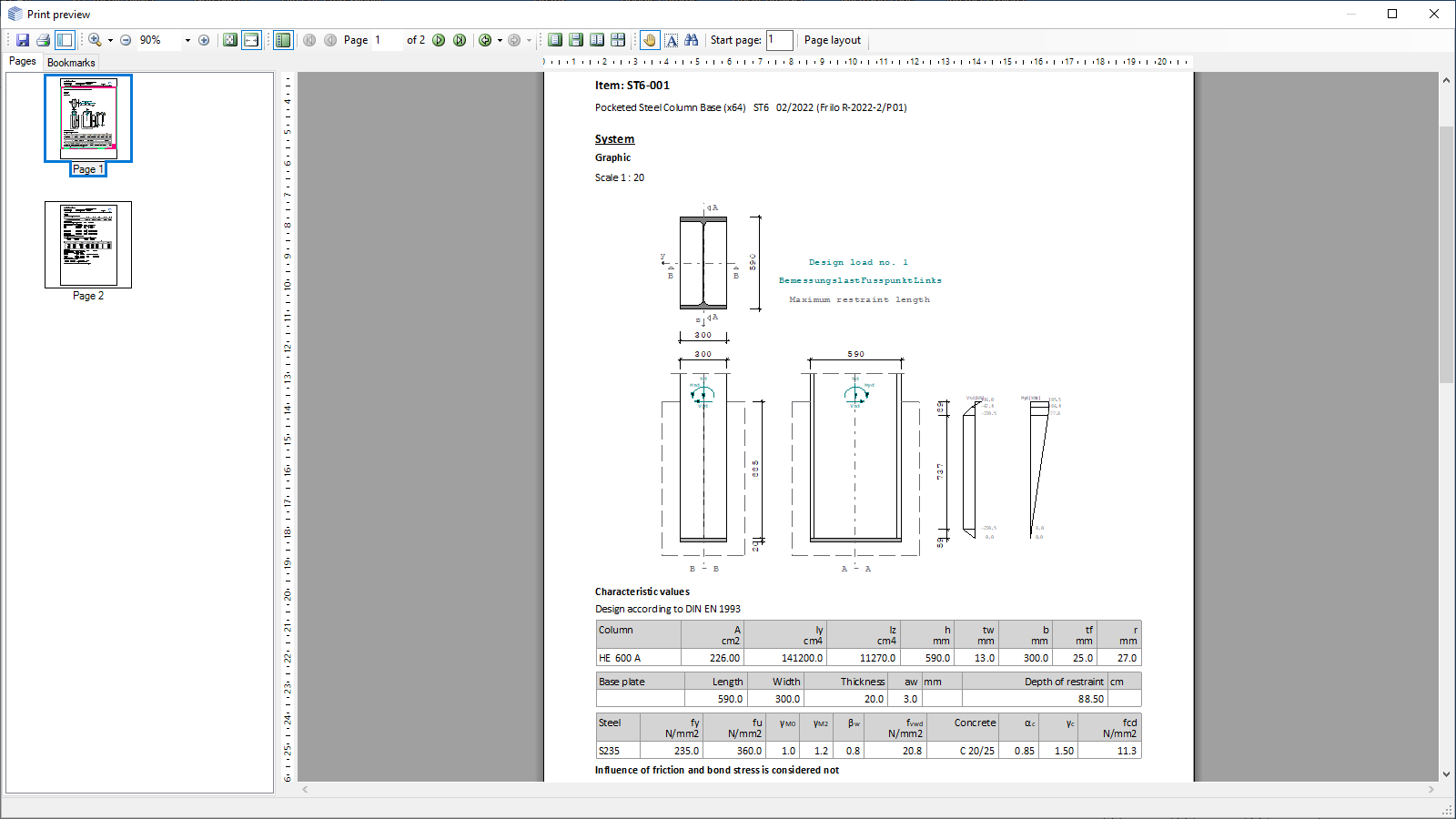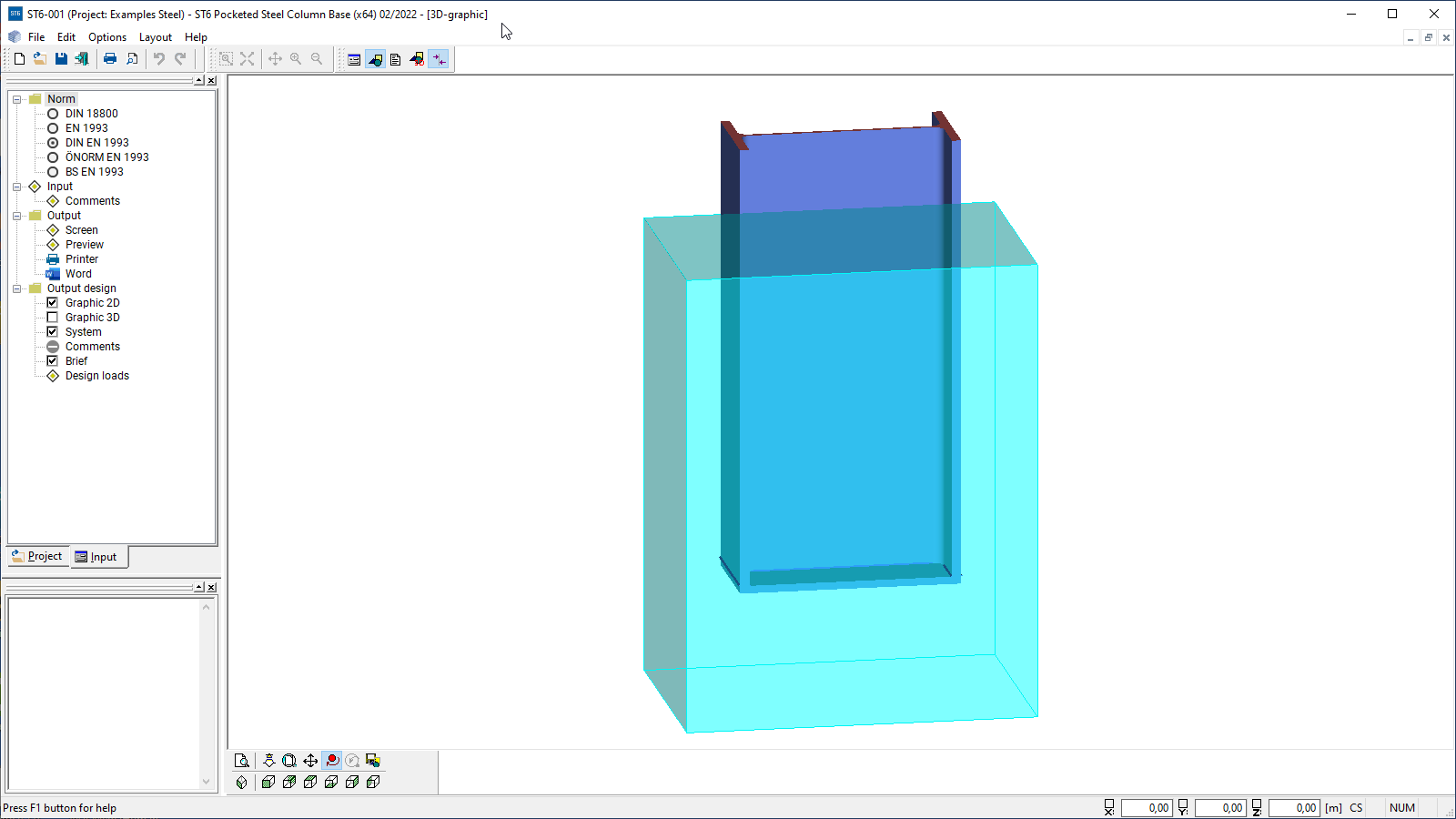
Pocketed Steel Column Base
ST6
The ST6 program is used to verify the bases of columns restrained in sleeve foundations under uniaxial or biaxial loading.
Discover now more programs from the section Steel!
SHOW MOREMaterial
- Structural steel: S235, S275, S355, S450
- Annealed steel (S275N – S460N)
- Thermo-steel (S275M – S460M)
- Weathering steel (S235W – S355W)
- High-temperature steel (S460Q – S460QL1)
- Hollow section, hot-finished (S235H – S355H)
- Hollow section, hot-finished, fine-grain (S275NH – S460NH)
- User-defined steel
- Reinforced concrete: C12/15 to C50/60 or user-defined concrete
Structural system
Available systems:
- Restrained column base with welded-on base plate
Cross-sections:
- Column
- I-sections as standard shapes
- I-sections as user-defined shapes
- Base plate
- Flat steel with standard or user-defined dimensions
Loads
- Optionally, design internal forces or characteristic internal forces from axial force, moment (My, Mz), and shear force (Vy, Vz)
- Multiple combinations of design internal forces can be entered
General
The depth of restraint is determined as a function of the permissible concrete compression and the maximum transverse force that can be borne by the column section.
The verification of the concrete compression between the column section and the foundation is performed.
The column section is verified in the area of restraint for the maximum shear and axial stress as well as the equivalent stresses at the web end at beginning of the filleting.
As a standard, a verification of the plastic cross-sectional resistance of the column section is performed in accordance with EN 1993-1-1. Optionally, the user can verify the cross-section for its elastic resistance.
In addition, the verification of the base plate underneath the column and the simplified verification of the fillet welds between the column and the base plate are performed.
Either an elastic-elastic or elastic-plastic verification of the plate thickness is performed.
Basis of calculation
EN 1993:
Bauforumstahl e.V, Beispiele zur Bemessung von Stahltragwerken und Kindmann, R., Laumann, J.: Erforderliche Einspanntiefe von Stahlstützen in Betonfundamente; Stahlbau 74(2005), Booklet 8, page 564-579
DIN 18800 (11/1990):
Structural safety verifications as limit state design. Two methods for the calculation of the depth of restraint are optionally available:
- in accordance with Kahlmeyer
- in accordance with Mang, Koch, Stiglat, Seiler in “Stahlbau”, magazine 9/2002 p. 653.
For the verification according to Kahlmeyer as per DIN 18800, also round, square, and rectangular hollow sections are permitted.
Document file formats
- Word
- Printer
Output
- Brief output
- User-defined scope
Import options
- ASCII-file
Export options
- ASCII-file
- DXF-file
- FRILO XML
Steel construction
- EN 1993
- DIN EN 1993
- ÖNORM EN 1993
- BS EN 1993
- DIN 18800
News

FRILO launches version 2024-2 with powerful updates for structural analysis and design
Highlights include the optimised design of Schöck Isokörbe®, the advanced integration of DC foundation engineering programs into the FRILO environment and new RSX interfaces for detail verifications in steel construction.

Load determination for eight-floor perimeter block development with FRILO Building Model
Find out how the structural engineers at bauart Konstruktions GmbH determined the loads for an eight-floor perimeter block development in Frankfurt’s Europaviertel district using the GEO from FRILO.




